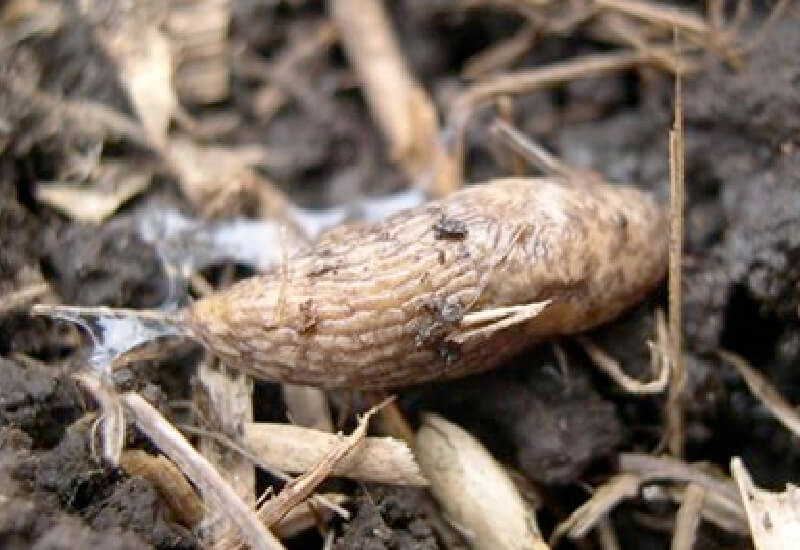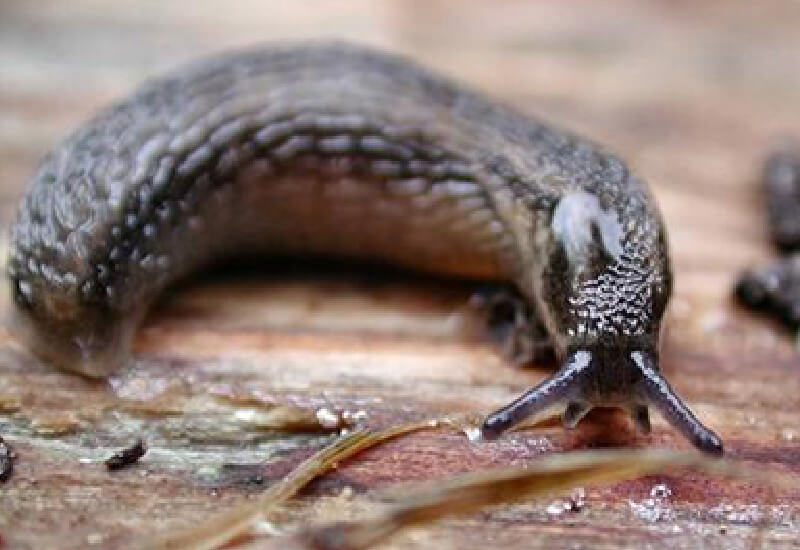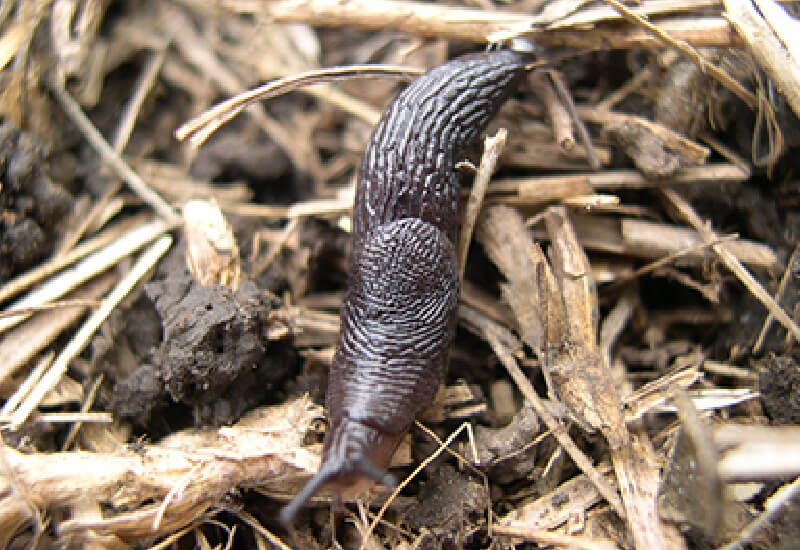Plagues: Slugs
Knowledge is your best plague control ally.
 SLUGS
SLUGS
SLUGS



Slugs are gastropod mollusks grouped into a wide number of families. The species most commonly found are the gray garden slug (Deroceras reticulatum), the small gray garden slug (Deroceras leave), and the black slug (Milax gagates). Most authors agree that the gray garden slug is the most widespread and harmful slug in Argentina and worldwide. They are frequently found in moist environments. In no-till fields, up to 50 individuals per square meter have been detected. Slugs can be a highly damaging plague during crop establishment, damaging the growing point and reducing the initial plant stand. Severe attacks may require reseeding. The highest risk of severe slug infestations is when rainfall levels are high. Moist environments, soils with high organic matter content, and abundant plant residues, such as no-till systems, create optimal conditions for the development of this plague. Besides, limited soil disturbance in this cropping system promotes the establishment of slugs in the fields. Slugs are most active in temperate climates.
ANATOMY
The body of a slug is 80% water and lacks external structures to shield them desiccation, making them highly vulnerable to moisture loss. They have a chewing mouthpart apparatus with well-developed jaws and a tongue with teeth or radula that enable them to consume large amounts of plant material.
LIFE CYCLE
Slugs are hermaphroditic individuals with a 6 to 12-month lifespan. They lay eggs in spring and autumn in cavities and soil crevices in groups of 10 to 70 eggs. An adult slug can lay from 100 to 800 eggs throughout its life. The incubation period of the eggs lasts from three to four weeks, after which young slugs emerge and immediately start wreaking havoc. They reach maturity and can start reproducing themselves after two to three months of development. They overwinter as eggs, juveniles, or adults and can have one or two generations per year.Slug populations peak during spring and autumn, ensuing from the birth of young slugs in accord with their life cycle.
FEEDING HABITS
They feed on all kinds of plant material. During the day, they remain hidden underground, under debris, or in leaf litter, protected from desiccation. At night, they come out to feed and can move up to five meters. The telltale sign of their presence is a shiny slimy secretion that leaves a trace as they move. Slugs can consume up to 50% of their body weight in a single night, and their damage can be identified and distinguished from other plagues by a characteristic stem feeding.
